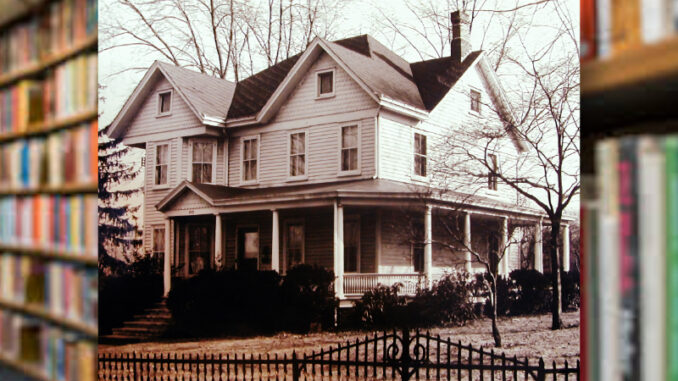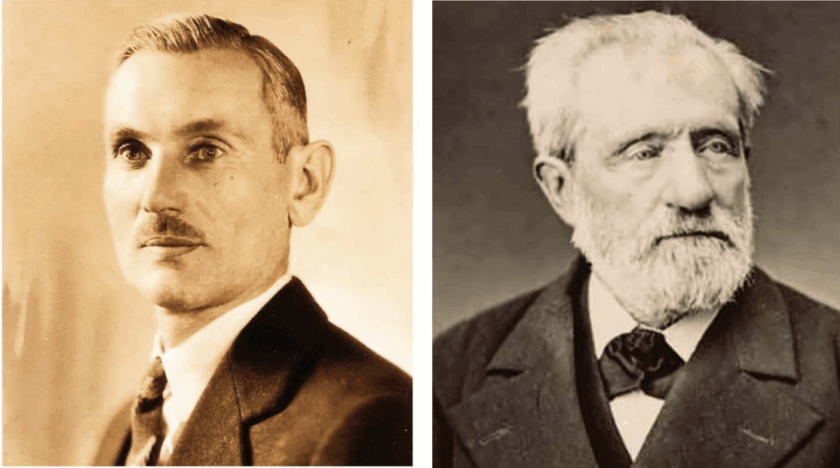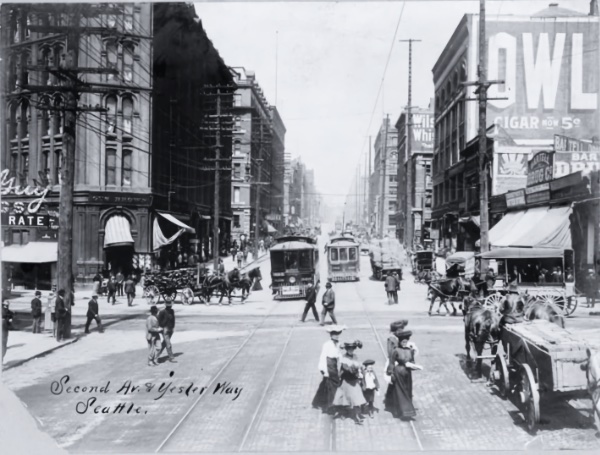
HILLSDALE—In the early days of the Pascack Valley, roads were not given names in the same way we know them today. The few roads that existed to serve the handful of families who lived here were generally referred to as the road going from one locality or farm to another, or leading to a well-known church, mill, or ferry. For example, Piermont Road in Hillsdale is so named because it was the early route for farmers of the valley taking their produce to Piermont on the Hudson River, and then on to the New York City markets.
Yesler Way in Hillsdale is a relatively short road with an unexpected history. It stretches from Hillsdale Avenue, next to the Hillsdale Library, to the Westwood border where it becomes Hillside Avenue. Two hundred years ago, residents knew it as the road to Bogert’s Mill. This was their route to reach the grist mill on the Musquapsink Brook, at present-day First Avenue and Mill Street in Westwood, where they would go to have their grain tuned into flour.
In 1899, the Peter Vorrath family came to Hillsdale and purchased a farm of 95 acres along Hillsdale Avenue. The Vorrath farmhouse still stands and since 1957 has been the home of the Hillsdale Free Public Library. The family was also responsible for naming Yesler Way, taking inspiration from young Harry Vorrath’s adventures out West.

Harry, born in 1883, decided around the age of 17 to travel west all the way to Seattle, Washington, where he began working for a land surveyor. A major thoroughfare in Seattle is Yesler Way, dating back to the early days of the city. When Harry returned to Hillsdale, his father had subdivided part of the Vorrath farm into building lots, and maps show that the old “road to Bogert’ s Mill” was still unnamed. Harry named it Yesler Way in 1910.
Incidentally, Yesler Way in Seattle received its name from Henry Yesler, the city’s principal industrialist of the late 19th century, and its sixth mayor. Yesler built a lumber mill on Elliot Bay, a part of the waters along the shore of Puget Sound.
Yesler’s mill stood at the bottom of the steep slopes leading down to the bay. The path by which the settlers, with the use of oxen, dragged logs to the mill became known as Skid Road. Over time that name became shorthand for the neighborhood’s gritty character. (From these beginnings, the term “Skid Row” spread across the country as a synonym for a run-down district.) As Seattle grew, the path was later called Mill Street, and then officially Yesler Way to honor the founder of the mill.

Seattle’s Yesler Way marked the dividing line between two very different worlds. To the north stretched the city’s growing business district, while to the south lay the seedy section of town, where saloons, gambling halls, and brothels catered to the sailors and lumberjacks. Why Vorrath chose to name a quiet Hillsdale lane after such a rough neighborhood is unknown. Maybe he had a good sense of humor.
